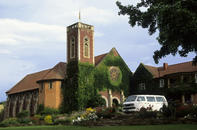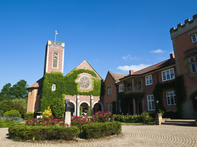Awareness of Mortality
In 1909 Anthony William Brown was formally appointed as the new headmaster of Michaelhouse. Although a young and relatively inexperienced man (he was only 30 years old) , he was an excellent scholar and an enthusiastic sportsman.

Two important events in the history of Michaelhouse coincided with his term in office.
The first of these was the setting up of the preparatory school Cordwalles on Town Hill. The aim of the preparatory school - established through the financial generosity of Bishop Baines - was to provide Michaelhouse with a 'steady stream of well-drilled recruits'.
The second event was the receipt by the school of a number of generous donations and interest-free loans, which took off the shoulders of the young headmaster the burden of trying to make ends meet. Brown was therefore freed to throw his efforts into raising the academic standards of the school, encouraging reading and appealing for donations of books to the library.
By the time the First World War broke out, Michaelhouse was an established and growing school, with 92 boys on the register. A sanatorium (built in time to handle the scarlet-fever epidemic of 1914, which eventually forced the temporary closure of the school) and - at last - a septic system for the lavatories.
200 Old Boys sewed in the Great War; 43 of them died. And so the war brought to Michaelhouse the same awareness of mortality that it did to so many schools in South Africa - but in the case of Michaelhouse the reality of the loss was brought home doubly hard by the death on active service, in 1916, of Anthony Brown.
Michaelhouse Chapel

Frederick Rowlandson Snell took up the post as the next rector of Michaelhouse in 1939. Only 35, he looked even younger than his years and brought to his task a vibrant energy and vitality. This was just as well, for the rigours of the Second World War, which broke out within Snell's first year of service, affected the school badly. As at other schools in the country, this marked the beginning of the entry of female teachers into the profession, as men were called up to the front line.
The memorial to the men who gave their lives in the Second World War (1 200 served, most of them in the air force, 77 were decorated, 128 lost their lives) is the chapel, the last addition to be designed by Fleming, completed in 1949 and dedicated in 1952. Traditional in design, it was able to contain the whole school for the first time in 25 years. Its stained-glass rose window, enhanced by the stained-glass sanctuary windows, is one of the gems of the school.